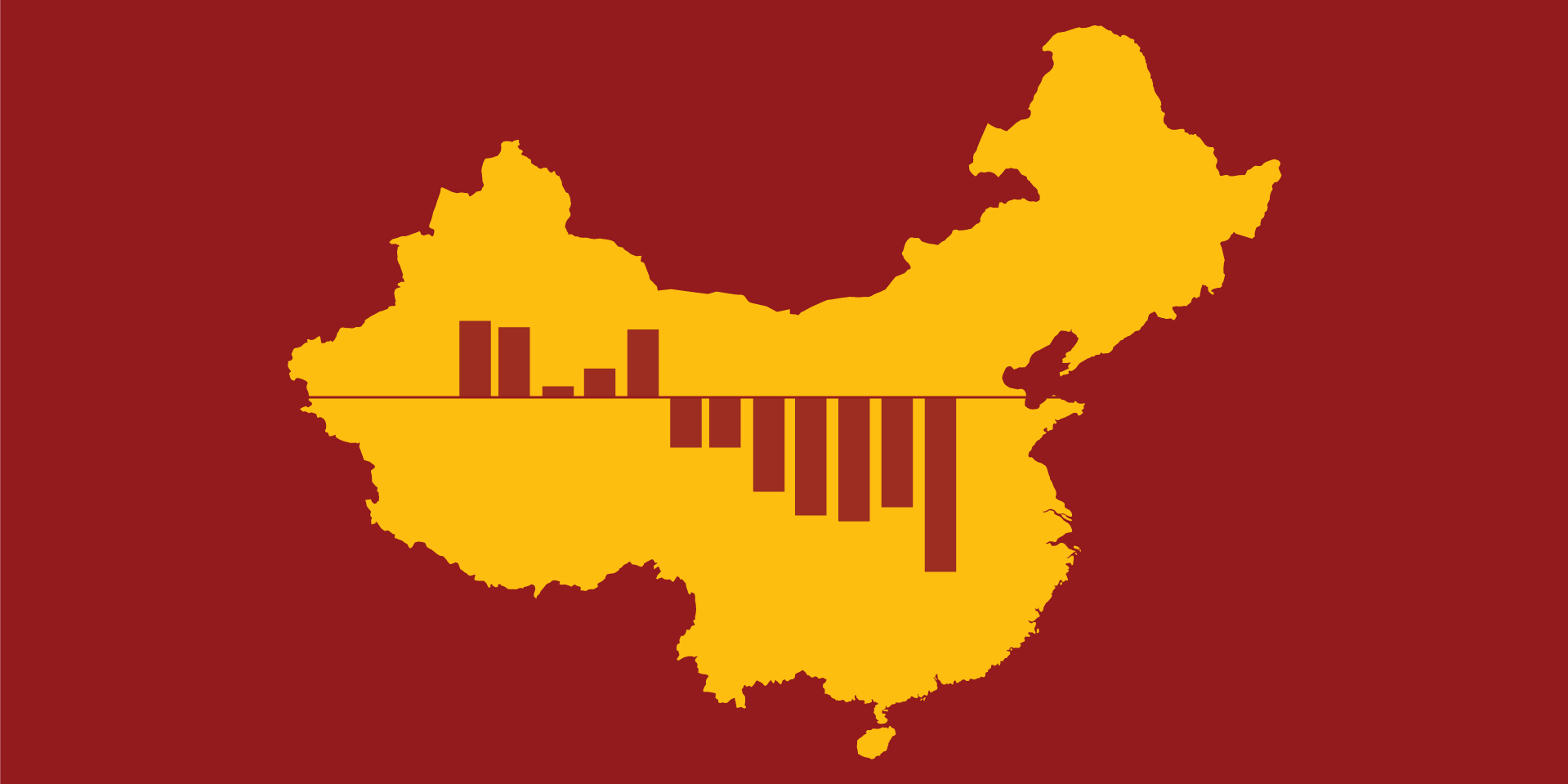China’s New Home Prices Fall at Slowest Pace in 17 Months in November: A Glimpse at the Larger Economic Challenges
China’s economic landscape, once a beacon of rapid growth and unshakable resilience, has found itself mired in a series of interconnected challenges in 2024. One of the key indicators of this complex reality is the housing market, where new home prices fell in November at the slowest pace in 17 months. While this deceleration in price drops might appear to signal a stabilization, it underscores deeper, more structural issues facing the world’s second-largest economy. Slowing exports, industrial contraction, reduced consumption, and lingering deflationary pressures have collectively painted a sobering picture of China’s economic health.
A Snapshot of the Housing Market
China’s property market, a cornerstone of its economic growth for decades, has been undergoing a painful correction. Data for November reveals that new home prices declined at their slowest rate since mid-2023, falling by just 0.3% month-on-month. This contrasts starkly with sharper drops observed earlier in 2024 and late 2023, when the real estate sector faced significant turbulence due to massive developer defaults, reduced buyer confidence, and tightening credit conditions.
While the slower pace of price declines may be welcomed by policymakers, it does not necessarily indicate a recovery. Instead, it may reflect a combination of government interventions, including mortgage rate cuts and relaxed restrictions on property purchases in certain cities. However, these measures have yet to spark a meaningful resurgence in demand, as household incomes remain under pressure and buyers remain cautious.

Slowing Exports: The Ripple Effects on Growth
The downturn in the housing market is part of a broader slowdown in China’s economy. Exports, traditionally a pillar of China’s GDP growth, have faced significant headwinds. In 2024, exports contracted by over 7% year-on-year during certain months, a trend driven by weakening global demand, trade tensions with the United States, and shifts in global supply chains.
Key sectors such as electronics, machinery, and textiles have borne the brunt of this slowdown. As Western economies grapple with inflation and higher interest rates, demand for Chinese goods has waned. Additionally, the diversification of supply chains away from China, particularly to Southeast Asia and India, has further eroded its export dominance.
This decline in export activity has cascading effects on industrial production, employment, and domestic investment. For a country that has relied heavily on its role as the “factory of the world,” the challenges in exports signify a major structural transition that could take years to navigate.

Industrial Contraction and Its Implications
China’s industrial sector, once the engine of its economic miracle, is also under strain. Industrial output growth has slowed to multi-decade lows, with key industries such as steel, cement, and manufacturing showing signs of contraction. The slowdown is partly attributable to weaker domestic and global demand, as well as the Chinese government’s efforts to reduce overcapacity and environmental degradation.
Moreover, the ongoing shift from an investment-driven to a consumption-driven growth model has created friction. While this transition is necessary for long-term sustainability, it has left many industries in a state of flux. Smaller manufacturers, in particular, are struggling to adapt to the new reality, with rising operational costs and subdued demand squeezing profit margins.
Consumer Spending: The Missing Growth Driver
China’s ambition to pivot toward a consumption-led economy faces significant hurdles. Household consumption, which accounts for less than 40% of GDP, remains far below the levels seen in advanced economies. In 2024, retail sales growth has been lackluster, with consumers wary of spending amid economic uncertainties.
A key factor dampening consumption is weak income growth. With youth unemployment hovering around 20% and many workers facing wage cuts or job insecurity, disposable incomes have not risen in line with the cost of living. Additionally, high household debt, largely tied to mortgage payments, has constrained spending power.
The “common prosperity” agenda—an initiative aimed at reducing income inequality and promoting social welfare—has yet to yield substantial results. While policies such as direct cash transfers and subsidies for rural households have provided some relief, they have not been sufficient to offset the broader economic slowdown.
Deflation: A Persistent Threat
Perhaps the most alarming sign of China’s economic malaise is the specter of deflation. In 2024, China experienced several months of outright deflation, with consumer prices declining year-on-year. While recent data shows a slight uptick in inflation, the overall price level remains subdued, reflecting weak demand across the economy.
Deflation poses a significant risk to economic stability. It can lead to a vicious cycle where consumers delay purchases in anticipation of further price declines, thereby exacerbating the slowdown. For businesses, deflation erodes profit margins and discourages investment, further dampening economic activity.
The deflationary pressures are also tied to excess capacity in many industries, particularly real estate. With unsold housing inventories piling up and developers slashing prices to attract buyers, the property sector remains a major drag on inflationary momentum.

Government Response: Policy Levers and Limitations
In response to these challenges, Chinese authorities have rolled out a mix of fiscal and monetary measures. The People’s Bank of China (PBOC) has cut interest rates multiple times in 2024, aiming to spur lending and reduce borrowing costs for businesses and households. On the fiscal side, the government has increased infrastructure spending and provided targeted support for struggling industries.
However, these measures have had limited impact so far. One reason is the high level of debt across the economy, which has constrained the effectiveness of monetary easing. Corporate and local government debt levels are at historic highs, leaving little room for additional borrowing.
Another challenge is the erosion of consumer and business confidence. Even with supportive policies in place, many remain skeptical about the sustainability of economic growth, particularly given the structural issues in the property sector and the global shift away from Chinese manufacturing.
The Road Ahead: Navigating a Complex Transition
China’s economic challenges are not insurmountable, but they require a delicate balancing act. Policymakers must address immediate concerns, such as stabilizing the property market and reviving consumption, while also pursuing long-term reforms to ensure sustainable growth.
One potential avenue is accelerating the “dual circulation” strategy, which emphasizes both domestic consumption and global trade. By fostering innovation, improving social safety nets, and promoting green development, China can create a more balanced and resilient economy.
Additionally, structural reforms in the property sector are essential. This includes reducing reliance on land sales for local government revenues, improving housing affordability, and addressing the debt overhang among developers.
Finally, re-engaging with global markets through trade and diplomacy will be crucial. While the shift in supply chains poses challenges, it also presents opportunities for China to strengthen its position in high-value sectors such as technology, renewable energy, and advanced manufacturing.
Conclusion
China’s slowing new home price declines in November may offer a glimmer of hope for the property sector, but it is only one piece of a much larger puzzle. The economy faces a confluence of challenges—from slowing exports and industrial contraction to reduced consumption and deflation—that require coordinated and forward-looking policy responses.
While the road ahead is fraught with difficulties, China’s capacity for adaptation and resilience should not be underestimated. By addressing its structural weaknesses and embracing a new growth paradigm, the nation can navigate these turbulent times and emerge stronger in the years to come.











